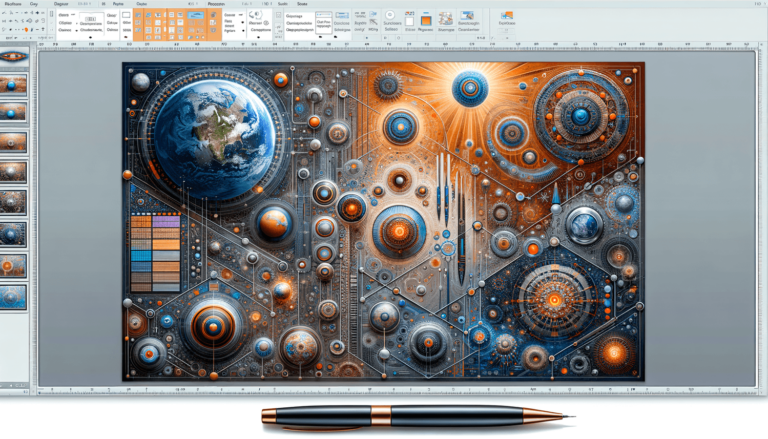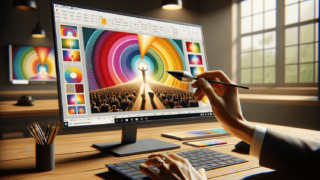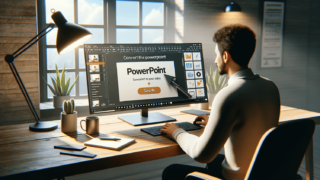
How to Create a Mood Board in PowerPoint?
Written by: Bill Whitman
Last updated:

How to Create a Mood Board in PowerPoint
A mood board in PowerPoint can be a game-changer for brainstorming sessions and project discussions. In this tutorial, we’ll guide you through the process of creating an effective and visually appealing mood board using Microsoft PowerPoint.
Category: PowerPoint Tutorials
Step-by-Step Guide
1. Set Up Your Slide Layout
- Open PowerPoint and create a new presentation. Choose a blank slide for maximum flexibility.
- Select the ‘Design’ tab to modify the slide size to your preference—’Standard’ (4:3) or ‘Widescreen’ (16:9) are common choices.
2. Gather and Arrange Your Visual Elements
Gather images, texts, and other materials that relate to your project’s theme.
- Use the ‘Insert’ tab to place images, text boxes, and videos onto your slide.
- Arrange these elements freely to create a visual storyboard that reflects the mood or theme of your project.
3. Customize with Artistic Effects
Enhance the visual appeal of your elements using PowerPoint’s built-in tools.
- Select an image and click on ‘Format’ to access artistic effects like color overlays, brightness/contrast adjustments, and artistic filters.
- Utilize shapes and borders from the ‘Insert’ shapes menu to add structure to your mood board.
4. Finalize and Share
Review your mood board and make any necessary adjustments.
- Ensure that the overall composition aligns with the mood you are trying to communicate.
- Save your presentation, and if needed, share it electronically or print it out for physical review.
Pro Tips
- Use the slide sorter view to manage multiple mood boards within a single presentation effectively.
- Press Ctrl + D to duplicate items quickly, saving time on layout creation.
- Keep slide backgrounds neutral to make sure your mood elements stand out.
Troubleshooting Common Issues
| Issue | Solution |
|---|---|
| Images not aligning | Use the ‘Align’ tools under the ‘Format’ tab to precisely align images and text objects. |
| File size is too large | Compress images and multimedia elements via the ‘Compress Media’ option under the ‘File’ tab. |
Advanced Techniques
- Layer Objects: Use the ‘Send backward’ and ‘Bring forward’ options to create depth in your mood board.
- Custom Animations: Apply subtle animations to make your mood board more dynamic during presentations.
Compatibility Notes
- Some newer effects may not be available in versions earlier than PowerPoint 2016.
- Mood boards created in PowerPoint can be saved as PDFs for easy sharing across different platforms, including non-Microsoft presentation software.
Conclusion
Creating a mood board in PowerPoint is an effective way to visually communicate ideas and themes for any project. Try exploring more advanced features in PowerPoint to further enhance your presentations.
FAQ
- Q: How can I share my PowerPoint mood board with someone who doesn’t have PowerPoint?
A: Save your presentation as a PDF or image files to ensure compatibility across different devices.
- Q: Are there templates available for creating a mood board in PowerPoint?
A: Yes, PowerPoint provides various templates that can be customized to create mood boards.
- Q: What is the best resolution for images used in a PowerPoint mood board?
A: For optimal display, use images with a resolution of at least 1920×1080 pixels.
Featured Posts
- No pillar pages found.








